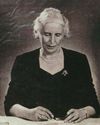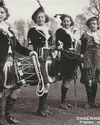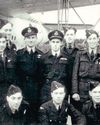
Whenever I visit a new area, there is one thing I look out for. It is normally found in a central position and is one of the most easily recognisable and well-known monuments to be found in almost every town and village in the country. It is, of course, the local war memorial. They have become such a common part of our everyday surroundings that many people take them for granted and now barely notice them. For most of the population, they have always been there as they mainly date from around a hundred years ago.
Although they seem so much a part of British life now, before World War One they were very rare. The only military memorials around then were mainly found in garrison towns and were usually for a local regiment. The exceptions were a few Boer War memorials situated in large cities or statues of the better-known war leaders. Memorials to the lower ranks were only to be found inside churches if the families of the men commemorated paid for them.
It was only after World War One that monuments to those who had fallen on the battlefields of Europe and beyond began to appear in all areas.
The larger the town the more immense the memorial. This was because most of the monuments were paid for by public subscription.
The larger the population the easier it was to collect the money needed to build them on a grander scale. In many cases the cost ran to thousands of pounds, huge amounts for the time.
هذه القصة مأخوذة من طبعة November 2024 من Best of British.
ابدأ النسخة التجريبية المجانية من Magzter GOLD لمدة 7 أيام للوصول إلى آلاف القصص المتميزة المنسقة وأكثر من 9,000 مجلة وصحيفة.
بالفعل مشترك ? تسجيل الدخول
هذه القصة مأخوذة من طبعة November 2024 من Best of British.
ابدأ النسخة التجريبية المجانية من Magzter GOLD لمدة 7 أيام للوصول إلى آلاف القصص المتميزة المنسقة وأكثر من 9,000 مجلة وصحيفة.
بالفعل مشترك? تسجيل الدخول

Animal Magic
Hilary Middleton recalls a children's author whose tales are still enjoyed today

BACK IN TIME WITH COLIN BAKER
BoB's very own Time Lord prepares for an alternative to panto, recalls his early reading choices and having his scenes cut from two cutting edge comedies

Marvels in Miniature
Claire Saul learns about the exquisite works on display at a new exhibition being held at a historic Georgian mansion

The Last Post
Michael Foley witnessed the end of an era

The Box of Delights
Chris Hallam remembers how his Christmas 40 years ago was lit up by a magical television drama

The Queen of Stage and Screen
Chris Hallam pays tribute to actress Dame Maggie Smith

Other 07
Jonathan Sothcott looks at the seven Sir Roger Moore films that you should have in your collection

In the Best Possible Taste
Derek Lamb remembers the wireless wizardry of Kenny Everett

POSTCARD FROM BUCKINGHAMSHIRE
Bob Barton remembers a ghostly train journey, enjoys some wassailing and fulfils a long-held ambition of attending a lawnmower festival

MERCY MISSION
John Greeves recounts the remarkable exploits of Sunderland flying boat T9114